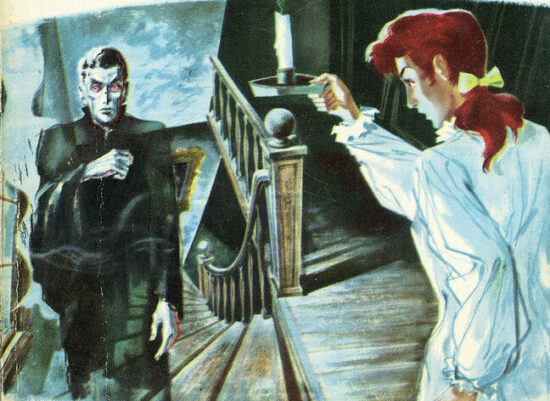Introduction
Henry James’s novel, “The Turn of the Screw,” is a gripping and haunting tale that delves into the realms of ambiguity and psychological intrigue. Published in 1898, this Gothic ghost story has captivated readers for over a century with its enigmatic plot, complex characters, and thought-provoking themes. This article will provide a detailed analysis of the novel, exploring its plot, characters, themes, writing style, setting, historical context, and its impact on literature.
Plot and Storyline
“The Turn of the Screw” revolves around a young governess who is hired to care for two orphaned children, Miles and Flora, at Bly, a remote country estate in England. The governess grows more and more convinced that Miss Jessel, the previous governess, and Peter Quint, the valet, who both had a disturbing impact on the kids before their untimely deaths, are haunting the house as she settles into her new position.
The plot unfolds through the governess’s perspective as she narrates her experiences and encounters with the apparitions. She becomes obsessed with protecting the children from the ghosts, believing that they have malevolent intentions. However, the true nature of these specters and their influence on the children remains ambiguous, blurring the line between supernatural phenomena and the governess’s own psychological state.
The novel is filled with suspense as the governess attempts to unravel the mysteries of Bly and protect the children from harm. The story takes unexpected turns, with moments of tension and revelation that keep readers on the edge of their seats. James skillfully builds an atmosphere of fear and uncertainty, leaving readers questioning the governess’s perceptions and the reality of the supernatural elements.
Characters
a. The Governess: The unnamed governess serves as the protagonist and narrator of the story. She is a young, inexperienced woman who becomes infatuated with her role as the children’s caretaker. Throughout the novel, the governess undergoes a transformation, shifting from a naive and idealistic individual to a deeply troubled and obsessed woman. Her unreliable narration adds to the ambiguity and complexity of the story.
b. Miles and Flora: The two children, Miles and Flora, are at the center of the governess’s concerns. Miles, the older of the two, is a precocious and charming boy. Flora, on the other hand, is a sweet and innocent girl. Their relationship with the governess is characterized by a mix of affection, manipulation, and questionable behavior, contributing to the psychological tension of the narrative.
Themes and Symbols
a. The Nature of Evil: One of the central themes in the novel is the nature of evil and its presence in the world. The ghosts of Miss Jessel and Peter Quint symbolize the corrupting influence of evil on the innocent. James explores the idea that evil is not confined to external forces but can also arise from within the human psyche, blurring the boundaries between good and evil.
b. Perception and Reality: “The Turn of the Screw” delves into the theme of perception and reality, raising questions about the reliability of the governess’s perspective. The novel explores the subjective nature of truth and the power of the mind to deceive itself, leaving readers to question whether the ghosts are real or figments of the governess’s imagination.
c. Repression and Sexuality: James touches upon the theme of repression and sexuality, particularly through the interactions between the ghosts and the children. The ghosts represent repressed desires and forbidden relationships, highlighting the tension between societal expectations and human nature.
Writing Style
Henry James’s writing style in “The Turn of the Screw” is characterized by its rich and intricate prose. His sentences are often long and convoluted, with meticulous attention to detail and psychological introspection. Through his use of vivid descriptions and evocative language, James creates a sense of atmosphere and unease. The narrative structure, with the story framed as a manuscript within a manuscript, adds an additional layer of complexity to the storytelling.
Setting and Atmosphere
The setting of Bly, a remote country estate, plays a crucial role in creating the atmospheric and eerie tone of the novel. The isolation and seclusion of the estate contribute to a sense of claustrophobia, intensifying the suspense and haunting atmosphere. The gothic elements of the setting, including the old mansion and the sprawling grounds, further enhance the haunting nature of the narrative.
Historical, Social, or Political Context
“The Turn of the Screw” is set in the late 19th century, a period marked by a shift in societal norms and the repression of Victorian England. James explores the tensions between traditional values and emerging desires, particularly regarding sexuality and the role of women. The novel reflects the anxieties of the era, as well as the psychological theories and debates surrounding the human mind and perception.
How does Henry James use ambiguity and psychological intrigue in “The Turn of the Screw” to captivate readers and create a sense of suspense?
Henry James masterfully employs ambiguity and psychological intrigue throughout “The Turn of the Screw” to engage readers and heighten the sense of suspense. By presenting the story through the governess’s subjective narration, James creates an unreliable narrator whose perceptions are open to interpretation. This ambiguity extends to the existence and intentions of the ghosts themselves, leaving readers uncertain about their true nature. The governess’s increasingly obsessive and unstable behavior further blurs the line between supernatural phenomena and her own psychological state. This deliberate vagueness keeps readers in a constant state of uncertainty, questioning the reality of the events and forming their own interpretations. It is this ambiguity and psychological complexity that make the novel so compelling and continue to captivate readers.
In “The Turn of the Screw,” how do the themes of perception and reality contribute to the overall meaning of the story?
The themes of perception and reality in “The Turn of the Screw” play a significant role in shaping the overall meaning of the story. The novel explores the subjective nature of truth and the power of the mind to deceive itself. The governess’s perspective, as the sole narrator, becomes the lens through which readers experience the events at Bly. However, her reliability is called into question due to her intense obsession with the ghosts and her possible descent into madness. The ambiguity surrounding the existence of the ghosts and the governess’s interpretation of their intentions creates a sense of uncertainty about what is real and what is imagined.
By presenting multiple possibilities and interpretations, Henry James invites readers to engage in a psychological exploration of the characters and events. The theme of perception and reality highlights the fallibility of human perception and the complexity of the human mind. It challenges readers to question their own judgments and consider the limitations of their own perspectives. Ultimately, the novel suggests that truth is subjective, and reality can be shaped by individual perceptions, making the story a thought-provoking examination of the human psyche and the nature of reality itself.
How does the setting of Bly and its gothic elements contribute to the overall atmosphere and tone of “The Turn of the Screw”?
The setting of Bly and its gothic elements play a crucial role in establishing the atmospheric and haunting tone of “The Turn of the Screw.” Bly, a remote country estate located in the English countryside, provides an isolated and atmospheric backdrop for the events of the novel. The estate’s sprawling grounds, eerie mansion, and surrounding natural landscapes create a sense of seclusion and isolation. This seclusion intensifies the suspense and unease felt by the characters and readers alike.
The gothic elements within the setting further contribute to the overall atmosphere. The decaying mansion, with its dark corridors, hidden rooms, and secrets, symbolizes the haunting past and the repressed desires lurking within its walls. The juxtaposition of the grandeur of Bly with its underlying darkness and secrets enhances the sense of foreboding and mystery. Additionally, the natural landscapes, such as the lake and the overgrown gardens, evoke a sense of the uncanny and the supernatural.
The gothic setting also serves to emphasize the psychological themes of the novel. The eerie ambiance of Bly reflects the governess’s inner turmoil and the psychological tension she experiences. It creates an environment that blurs the boundaries between reality and the supernatural, heightening the psychological intrigue and adding to the overall sense of dread. In this way, the setting becomes an integral part of the story, contributing to the tone, mood, and thematic exploration of the novel.
Sources
The Turn of the Screw – Wikipedia






